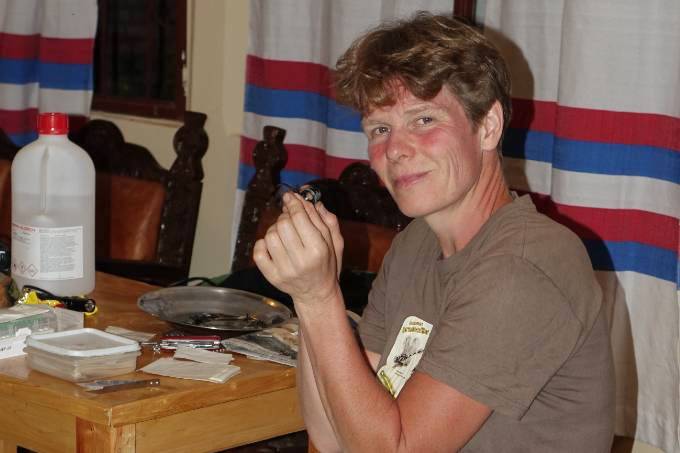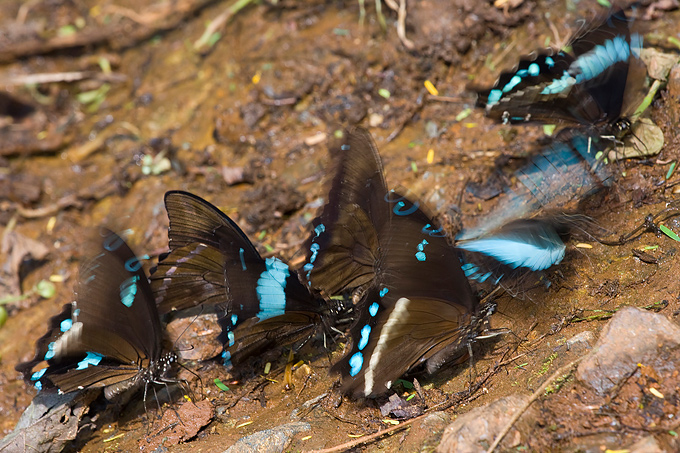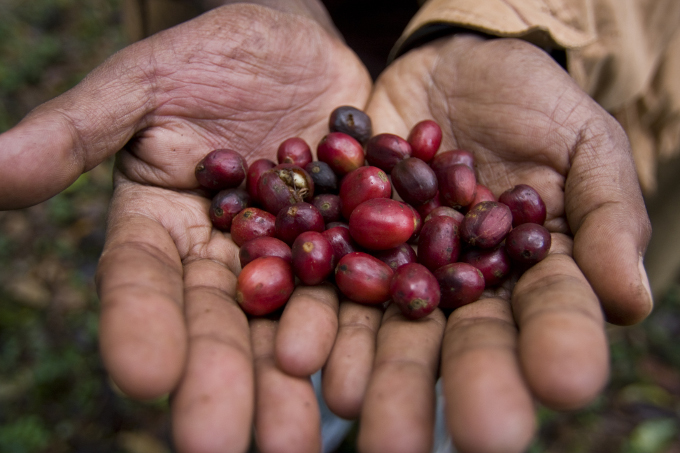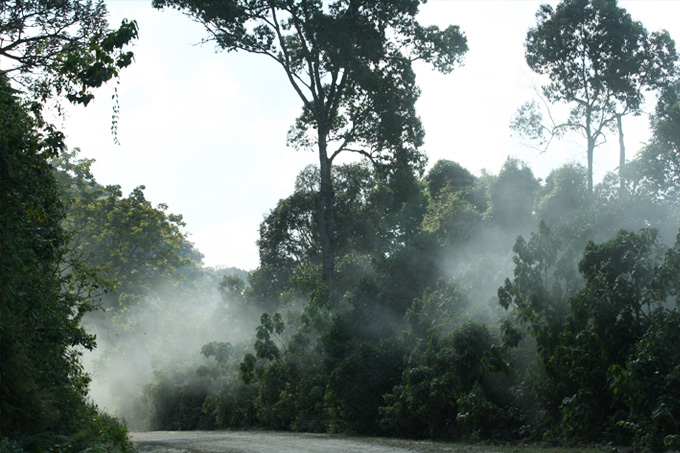A Highlander in Ethiopia
Portrait of an endangered dragonfly species
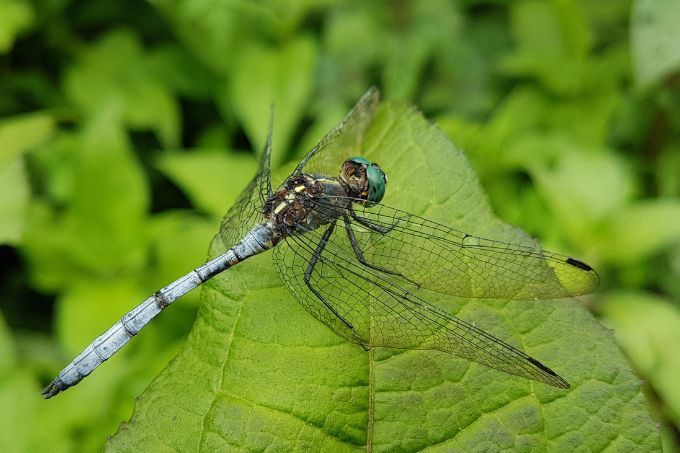
Ethiopian Highlander - photo: Klaas Douwe, B. Dijsktra, Dr. Viola Clausnitzer
Those who venture into the remote mountain regions of Ethiopia may glimpse the turquoise-shimmering dragonfly, perhaps on a rock in a stream or perched on a branch. As its name suggests, the Ethiopian Highlander is found exclusively in Ethiopia. Here, it lives along clean, swiftly flowing streams at elevations between 1,300 and 2,400 metres.
A species under pressure

Wetlands and wild coffee forests in Kafa Biosphere Reserve - photo: Viola Clausnitzer / Klaas-Douwe B. Dijsktra
For the “International Union for Conservation of Nature” (IUCN), the renowned insect researcher Viola Clausnitzer conducted a complete assessment of all known dragonfly species – a collection of data unique among the class of the insects. The Ethiopian Highlander is found, among other locations, in NABU's project area in the Kafa Biosphere Reserve, and is classified on the IUCN Red List of Threatened Species as vulnerable. Clausnitzer emphasises how sensitively species with a limited habitat react to changes in that ecosystem: “These can include water pollution, deforestation and the canalisation of bodies of water.” Healthy dragonfly populations serve as an indicator that the ecosystem is intact.
With dramatic human population growth in Ethiopia, the usage pressure also increases on these last remaining, yet already fragmented habitats and populations of the Ethiopian Highlander. More and more streets are being paved and concrete buildings constructed in the mountainous regions, Clausnitzer explains. In order to preserve the dragonflies and other species, the remaining forests and waterways must be better protected. “Together with partners like NABU Ethiopia and the local population, important work has been done on this front”, praises the entomologist. For instance through the establishment of the Kafa Biosphere Reserve and alternative sources of income that do not require further destruction of habitats.
Typical Ethiopian Highlander – turquoise compound eyes
And how can one identify the Ethiopian Highlander among all the other thousands of dragonfly species? Turquoise-hued compound eyes, blackly iridescent wings, a body length between 28 and 38 millimetres, a touch of yellow on the keel and, in the case of older males, the pale colouring on the abdomen. “Only two species of the genus develop this white-pale blue coating: the Ethiopian and the Kenyan Highlander”, Clausnitzer explains. “All the others have black-yellow colouring.”
Dragonflies are predators. Already in their larval life stage they feed on other water organisms, while the adult dragonflies are true virtuosos of flight and prey on other flying insects, such as horseflies, mosquitoes or other flies. In turn, dragonflies serve as an important food source for fish, frogs and birds. “They are integrated in food webs with many other various organisms and so serve to stabilise complex ecosystems”, says the entomologist.
Knowledge gaps persist, however, with regards to the dragonflies' life cycle. “While with our domestic German species, we see the larvae live multiple years and the adult animals just a few weeks, it seems to be the exact opposite with many tropical species”, Clausnitzer explains. “However, we know nothing on this front regarding the dragonflies of tropical mountainous areas, like in Ethiopia.” Due to the cooler habitats for larvae and the dramatic seasonal temperature swings for the adult dragonflies, it could be that the larval phase once again makes up the majority of the dragonflies' life cycle. “But that is still pure speculation.”
Knowledge creates the foundation for conservation
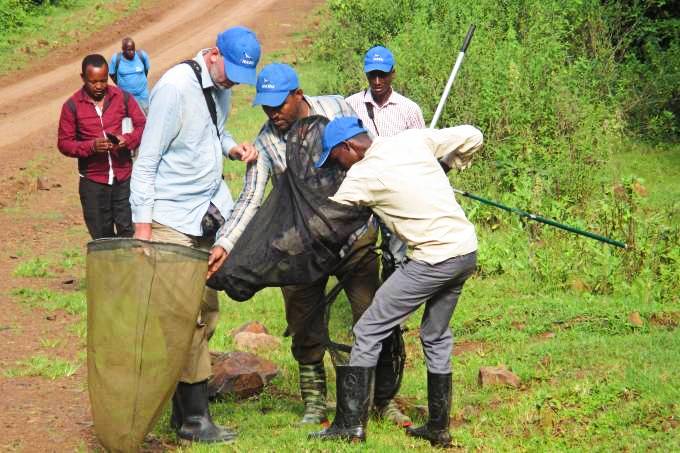
During two expeditions to count insects, the NABU team was able to gather a wealth of information on the species in the Kafa Biosphere Reserve - photo: Viola Clausnitzer
In this light, fieldwork to count insects and long-term cooperations with partner organisations like in Kafa are even more important. “Alone the fact that two different seasons could be covered during the assessments organised by NABU has led to an enormous increase in our knowledge”, Clausnitzer reports. “During each of the assessments, we found species that were not present as adult dragonflies at the other point in time.” She emphasises the need for further bilateral research projects on the biology of endemic species, as well as data collection in the more remote and less-known corners of the biosphere reserve.
Asaye Alemayehu sees things similarly. The manager of the regional office of NABU Ethiopia is implementing numerous projects in the Kafa Biosphere Reserve, together with his team. “By conducting assessments and monitoring the status of insects and other species, we gain valuable insights into the ecosystem, as well as the threats it faces”, he says. “It helps us identify areas of high biodiversity, understand the impact of human activities on the ecosystem, and implement targeted conservation efforts to protect vulnerable species and habitats.”
There is much to be done: NABU seeks to restore forests with native species, protect bodies of water from pollution, sustainably reshape agriculture and land management, create corridors between fragmented habitats and conduct biodiversity monitoring. With these measures, the beautiful dragonflies of the Ethiopian montane forests will still be flying over glass-clear streams into the far future.
Caitlin Hardee (reprinted and translated from Naturschutz heute 2/24)
MORE INFORMATION
Ethiopia is a globally significant biodiversity hotspot and one of the world's most species-rich countries. The last remaining highland forests have been identified as particularly valuable key ecosystems. However, they have declined dramatically in size. more →
In Kafa Biosphere Reserve natural ecosystems are under pressure due to poverty, the need of natural resources for daily life e.g. for cooking and the lack of understanding of the fragility of ecosystems. more →
10,000 hectares of forest in Kafa Biosphere Reserve will be put under a Participatory Forest Management System. By doing so the user rights of the forest will be transferred for 99 years to the local communities and the forest will serve as a long-term source of income through sustainable use. more →

